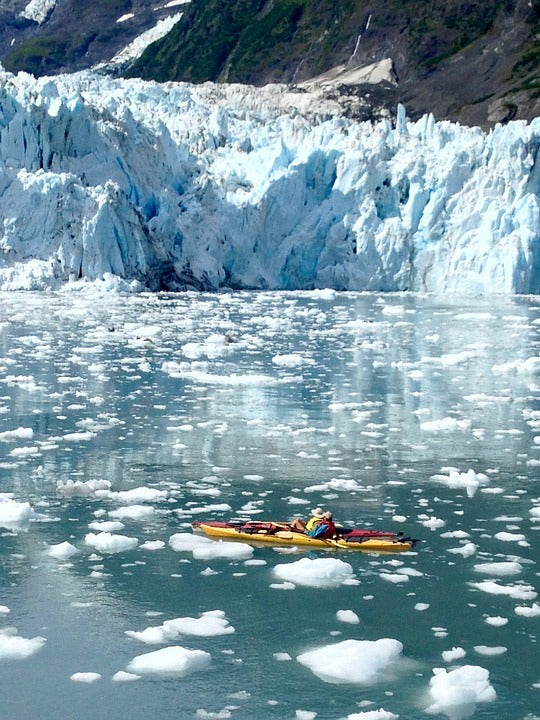In our previous article, we took a closer look at the available types of sleeping pads. Like most things, finding the pad that works best for you may come down to trial and error, but hopefully our post will give you a better idea of where to start.
Sleeping bags are no different. There are many different styles, designs, insulation levels and types, and extras that are combined in multiple ways, which can make sleeping bag selection seem like a daunting process. Armed with a clear understanding of how you plan to use it and a little knowledge about the options available, you should have no trouble selecting the ideal sleeping bag for your next adventure.
Insulation

First, let's talk about insulation. When it comes to sleeping bags, there are two basic types: down and synthetic. Both offer pros and both have cons, so consider how you plan to use it, where you plan to use it, and how much you want to invest before you buy. Synthetic sleeping bags usually use polyester as the insulation material whereas down sleeping bags use down (the fluffy feathers that offer insulation to various birds). When selecting a down sleeping bag, consider buying one that is marked RDS certified (Responsible Down Standard).
Synthetic Pros:
- Dry Quickly
- Work When Wet
- Generally Less Expensive
Synthetic Cons:
- Heavier Than Down Counterpart
- Limited Compaction
Down Pros:
- Lightweight
- Compacts Well
- Last Long With Care
Down Cons:
- Loses Insulation Value When Wet
- Expensive
Temperature Rating
Before we get into the styles of sleeping bags, another important factor to consider is the temperature rating. There are three types of ratings: Comfort, Limit, and Extreme. The Comfort rating is the temperature at which an adult female would be comfortable sleeping in that sleeping bag. The Limit rating is the temperature at which an adult male would be comfortable sleeping (or a female curled into a fetal position). The Extreme rating is the temperature at which an adult female would remain alive while using the sleeping bag (but probably at severe risk of hypothermia).
Most sleeping bags will only put the Limit rating on the label if they use this system at all (so ladies, keep that in mind when making your selection). Many are simply labeled as Summer, 3 Season, or Winter. Summer sleeping bags generally work well down to 35° F while 3 Season sleeping bags work well down to 10° F and Winter sleeping bags work under 10° F. The effectiveness of the sleeping bag varies by condition, of course, so having a proper sleeping pad, good sleepwear, and considering your personal needs may change the rating you require.
Sleeping Bag Shapes

Rectangular Sleeping Bags
These are rectangular in shape and provide room to roll around inside the bag. They typically unzip completely, allowing them to be used as a blanket as well. Their extra space means less heat retention, however, and they don't usually come with a hood, which means more heat loss near the opening on top.
- Heavier and less heat retention than other sleeping bags.
- Low cost and easy to find.
- Can be zipped together with another rectangular bag to make a larger sleeping bag.
- Best used for car camping and indoor use.

Mummy Sleeping Bags
These sleeping bags are designed to "cling" to your body. This tapered shape allows the bag to hold more heat and keep you sleeping comfortably in colder temperatures. They generally do not unzip the entire way, which means less heat loss at your feet but also makes moving while sleeping difficult and may be less comfortable for some sleepers.
- Lightweight and easy to compact.
- Have a hood to minimize heat loss at opening.
- Easy to find but may be more expensive.
- Best for general camping, backpacking, kayak/paddle board camping.
Double-Wide Sleeping Bags
These sleeping bags are designed for couples or those who can't sleep without a lot of space. Keep in mind that any body heat gained by having two people sleep in the same bag may be lost by the loose fit of the sleeping bag. Some of these bags can be completely unzipped, allowing you to break them down into two separate sleeping bags and making them far more versatile. Others come with hoods to help prevent some heat loss through the opening.
- Heavier and bulkier than other sleeping bags.
- More expensive and more difficult to find.
- Best for car camping.
There are other types of sleeping bags, of course, including some new and unusual styles like the body-shaped sleeping bag that looks a bit like a snowsuit and the elephant's foot style which only covers your lower half while sleeping. There are also hybrid designs like the barrel sleeping bag, which isn't as restrictive as a mummy but doesn't have the heat loss as one might experience with a rectangular style bag. And then there are the sleeping bags designed specifically for men, women, or children which take into account body shape, increased insulation at cold zones (more layers by the woman's feet, for example), and extra features like pillow pockets or sleeves for sleeping pads.
When it comes to getting a good night's sleep, no one can tell you which combination of features is going to be perfect for your unique situation. Instead, think about your needs, set up a list of priorities, and then consider the environmental conditions. When in doubt, consider borrowing a sleeping bag from a family member or friend to test it out before purchasing.




















